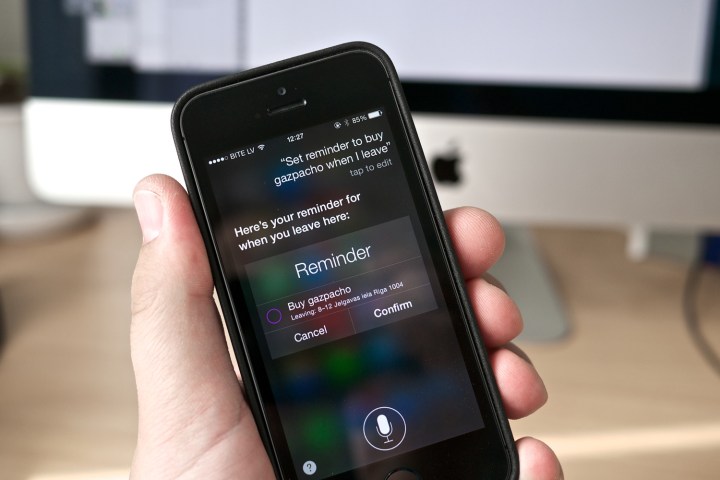
Between 2002 and 2007, three U.S. patents, 6,917,802, 7,245,903 and 6,405,029, were granted to Byard Nilsson, and these were transferred to Dot 23 Technologies in September of 2015, according to Apple Insider. Patents ‘802 and ‘029 describe a program that can recognize numbers and make basic voice dial functions.
“Voice cues or prompts are provided and vocalized numbers (audio) are received to indicate a desired terminal connection as well as to authenticate or verify that a remote instrument is being properly used. If so, the central station determines whether the instrument has adequate pre-paid value to cover a call,” according to patent ‘029.
Dot 23 Technologies, a “non-practicing entity” in patent-speak, says Apple has induced its customers to use the voice recognition and voice dialing functions of Siri, and has thus infringed upon ‘802 and ‘029.
Patent ‘903 describes a service that provides “geographically related location data,” to display places that users are searching for. “Target classifications might be restaurants, garages, medical services, hotels, and so on. Sub-classes for restaurants for example might be related to cost, e.g. expensive, moderate and inexpensive. Sub-sub-classes, for example might be food types, e.g. Italian, Mexican, and Chinese.”
Dot 23 Technologies says Apple has been notified of these infringements, and has not ceased its infringement. Dot 23 is seeking monetary payment in regards to damages. These alleged infringements target the iPhone 4, the iPhone 5, and the iPhone 6, and their respective variants.
Patent trolling or legitimate claim? We’ll have to wait to see what the judge says to find out if there’s any merit in this suit.
Editors' Recommendations
- Apple didn’t make Siri a ChatGPT killer at WWDC — and that scares me
- HomePod owners can now ask Siri to play music from Deezer
- Is this leaked image the new Apple TV Siri remote?
- How to delete Siri recordings from Apple servers
- Apple’s Siri now helps you to check coronavirus symptoms


